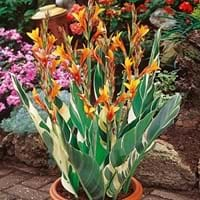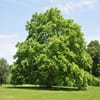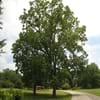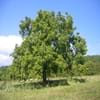Life Span
Annual and Perennial
Perennial
Type
Tree
Bulb or Corm or Tuber
Origin
South America, Brazil
Latin America and the Caribbean, Central America, South America
Types
Not Available
Canna Altensteinii, Canna Indica Purpurea
Number of Varieties
Not Available
Habitat
Dry areas, Forest edges
Subtropical climates, Tropical regions, Warmer regions
USDA Hardiness Zone
9-12
8-11
Sunset Zone
H1, 13, 16, 17, 18, 19, 20, 21, 22, 23, 24
21,22
Habit
Oval or Rounded
Upright/Erect
Minimum Height
Not Available
Minimum Width
Not Available
Flower Color
Yellow, Lemon yellow
White, Yellow, Red, Orange, Pink, Rose, Salmon
Flower Color Modifier
Bicolor
Bicolor
Fruit Color
Brown, Sandy Brown
Green, Tan, Brown
Leaf Color in Spring
Green, Light Green
Yellow, Red, Green, Purple, Gray Green, Dark Green, Burgundy
Leaf Color in Summer
Green, Gray Green
Light Green
Leaf Color in Fall
Green, Gray Green
Several shades of Green
Leaf Color in Winter
Not Available
Light Green
Leaf Shape
Oblong
Elliptic
Plant Season
Spring, Winter
Spring, Summer, Fall
Sunlight
Full Sun
Full Sun, Partial Sun
Type of Soil
Clay, Loam, Sand
Clay, Loam, Sand
The pH of Soil
Acidic, Neutral, Alkaline
Acidic, Neutral, Alkaline
Soil Drainage
Well drained
Average
Bloom Time
Early Spring, Late Winter
Indeterminate
Tolerances
Drought
Drought
Where to Plant?
Ground
Container, Ground, Pot
How to Plant?
Seedlings, Seperation, Vegetative Reproduction
From bulbs, Seedlings
Plant Maintenance
Medium
Medium
Watering Requirements
Keep the ground moist but not water-logged, Requires watering in the growing season, Water more in summer, Water occasionally
Keep the ground moist but not water-logged, Requires regular watering
In Summer
Lots of watering
Lots of watering
In Spring
Moderate
Moderate
In Winter
Average Water
Average Water
Soil pH
Acidic, Neutral, Alkaline
Acidic, Neutral, Alkaline
Soil Type
Clay, Loam, Sand
Clay, Loam, Sand
Soil Drainage Capacity
Well drained
Average
Sun Exposure
Full Sun
Full Sun, Partial Sun
Pruning
Cut leaves after fall, Pinch or prune as they grow to promote branching and bushiness, Prune before Winter, Prune when plant is dormant, Remove dead leaves, Remove deadheads
Remove damaged leaves, Remove dead leaves
Fertilizers
All-Purpose Liquid Fertilizer
All-Purpose Liquid Fertilizer
Pests and Diseases
Pests and diseases free, Red blotch
Red blotch
Plant Tolerance
Drought
Drought
Flower Petal Number
Single
Single
Foliage Texture
Medium
Bold
Foliage Sheen
Glossy
Not Available
Attracts
Not Available
Butterflies, Insects
Allergy
no allergic reactions
Not Available
Aesthetic Uses
Showy Purposes
Beautification, Bouquets, Landscape Designing, Showy Purposes
Beauty Benefits
Not Available
Not Available
Environmental Uses
Air purification
Air purification
Medicinal Uses
No Medicinal Use
Diuretic
Part of Plant Used
Leaves, Wood
Flowers, Leaves, Root, Seeds
Other Uses
Wood is used for making furniture, Wood is used in construction
Decoration Purposes, Showy Purposes, Used As Food, Used as Ornamental plant, Used in paper industry
Used As Indoor Plant
No
Yes
Used As Outdoor Plant
Yes
Yes
Garden Design
Feature Plant, Shade Trees, Street Trees, Tropical
Bedding Plant, Container, Feature Plant, Foundation, Mixed Border, Tropical, Water Gardens
Botanical Name
HANDROANTHUS billbergii
CANNA
Common Name
Guayacán, Tabebuia
Canna, Canna Lily
In Hindi
Tabebuia
भंग लिली
In German
Tabebuia
Canna Lilie
In Spanish
Tabebuia
Canna lirio
In Greek
Tabebuia
Canna κρίνος
In Portuguese
Tabebuia
Canna
In Polish
Tabebuia
Canna lilia
In Latin
Tabebuia
Canna lilium
Phylum
Not Available
Embryophyta
Class
Not Available
Liliopsida
Order
Lamiales
Zingiberales
Family
Bignoniaceae
Cannaceae
Clade
Angiosperms, Asterids, Eudicots
Angiosperms, Commelinids, Monocots
Tribe
Not Available
Not Available
Subfamily
Not Available
Not Available
Importance of Tabebuia and Canna
Want to have the most appropriate plant for your garden? You might want to know the importance of Tabebuia and Canna. Basically, these two plants vary in many aspects. Compare Tabebuia and Canna as they differ in many characteristics such as their life, care, benefits, facts, etc. Every gardener must at least have the slightest clue about the plants he wants to plant in his garden. Compare their benefits, which differ in many ways like facts and uses. The medicinal use of Tabebuia is No Medicinal Use whereas of Canna is Diuretic. Tabebuia has beauty benefits as follows: Not Available while Canna has beauty benefits as follows: Not Available.
Compare Facts of Tabebuia vs Canna
How to choose the best garden plant for your garden depending upon its facts? Here garden plant comparison will help you to solve this query. Compare the facts of Tabebuia vs Canna and know which one to choose. As garden plants have benefits and other uses, allergy is also a major drawback of plants for some people. Allergic reactions of Tabebuia are no allergic reactions whereas of Canna have Not Available respectively. Having a fruit bearing plant in your garden can be a plus point of your garden. Tabebuia has no showy fruits and Canna has no showy fruits. Also Tabebuia is not flowering and Canna is not flowering . You can compare Tabebuia and Canna facts and facts of other plants too.





